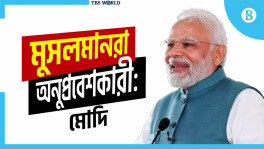Interest rates: What does capping really cap?
What happens if the demand for liquidity exceeds the supply of liquidity initially? By assumption, the ceiling is set below the initial interest rate

On June 21, 2018, Bangladesh Association of Banks (BAB), a platform of private banks' directors, agreed to cap the interest rate on deposits at 6 percent and the lending rate at 9 percent from July 1. This came after the Bangladesh Bank (BB) obliged private banks with a one percentage point cut in cash reserve ratio (CRR), 75 basis point decrease in the repo rate and extension of the deadline for lowering the Advance-Deposit Ratio from 85 to 83.5 percent. The Finance Minister had earlier announced a 2.5 percentage points reduction in corporate tax (on banks) in his FY19 budget speech. Private banks' lending rates at that time were 10 percent on average while savings deposit rates were below 6 percent. Interest rates on all types of deposit schemes in state banks were between 3 and 6 percent. But their lending rates varied from 11 to 13 percent. Not much changed a year and a half later as BB lamented most banks failing to keep their promises.
This sounds great. No one, other than loan sharks, likes high interest rates. Not surprisingly, several editorials of various political persuasions urged swift implementation. Follow up stories on whether banks are complying with this 9-6 dictum have featured regularly in the media ever since. BB has been circumspect in this regard, issuing letters rather than circulars, “advising” banks to bring rates down to single digits.
Policy decisions such as above are known as financial repression. Financial systems in many countries tend to be “repressed” through some combination of interest-rate ceilings, reserve requirements, foreign-exchange regulations, rules on the composition of balance sheets and heavy taxation. Among these, ceilings on lending rates are a widely-used instrument in many developing and developed countries. Some recent studies show at least 76 countries around the world, representing more than 80 percent of global GDP and global financial assets, impose some restrictions on lending rates. These countries are spread across all geographic and income dimensions.
The economic and political rationale for putting ceilings on lending rates is to protect consumers from usury or to make credit cheaper and more accessible. In turn, it is expected to spur economic growth and increase employment. These are laudable goals, but the critical question is under what conditions do these policies work and are such conditions prevalent in Bangladesh’s financial sector?
Bangladesh Bank manages the nation’s liquidity. How it does so determine the value of money and the price level. But there is much more to liquidity than can be influenced through a ceiling on the lending rate. What the banks, non-financial businesses, state-owned enterprises, government agencies and individual households do also affect liquidity.
In theory, the demand for credit varies inversely with the interest rate. The total amount of liquidity demanded increase if interest rates are lowered. Supply of credit on the other hand varies directly—liquidity supplied increases with increase in interest rates. In highly contestable credit markets, interest rates adjust until demand equals supply. Various external rigidities in real life can divert the interest rate from the market equilibrium to a rate where demand is not equal to supply. Consequently, the impact of lending rate ceiling on the amount of liquidity available in the economy depends on the initial conditions.
Suppose the existing interest rate is above the rate where the supply of liquidity exceeds the demand for liquidity. A decrease in the interest rate in this case reduces the supply and increases the demand for liquidity. Since initially demand was short relative to supply, it is an increase in demand that matters. Aggregate liquidity increases because demand has increased.
What happens if the demand for liquidity exceeds the supply of liquidity initially? By assumption, the ceiling is set below the initial interest rate. Assuming the suppliers comply with the ceiling, the demand for credit rises and supply declines. Now since the supply was short relative to demand initially, it is the decrease in supply that matters. The total amount of money lent in the economy decreases. Hence, there is an apparently paradoxical response to the interest rate cap—it ends up capping liquidity!
This illustrates the need for empirical analysis to make sure that overall conditions in the economy are appropriate for interest rate easing as a measure for stimulating the availability of credit. The theory also tells us where the empirical study ought to focus--check whether there is excess demand for or excess supply of credit, before capping interest rate below the prevailing rate. There exist situations where lower interest rate will have perverse effect compared to those intended.
Which assumption on the initial conditions is plausible in the case of Bangladesh? Rising call money rates, pressure exerted by bankers on BB to reduce the CRR and policy rates and increase the share of public sector deposits that can be kept in private banks from 25 percent to 50 percent, decreased bank deposit growth from 10.3 percent in June 2018 to 9.5 percent in June 2019, sharp rise in growth of currency held outside banks from 2.5 percent in June 2018 to 9.5 percent in June 2019 and unusually low 11.3 percent private credit growth in FY19 are all evidence pointing to an initial condition where the demand for credit exceeds supply.
Several country case studies show that the effects of interest rate caps depend on its details. Caps set below initial levels, when there is excess demand, reduce overall credit supply. The extent of the decline depends on the scope of the restrictions. Narrow caps affect primarily a clearly defined market segment, but blanket ones such as the 9 percent cap for all credits reduce overall credit supply.
Blanket caps further affect the distribution of credit as they result in a particularly large decline of unsecured and small loans, as well as in credit to small and medium enterprises and riskier sectors. Reallocation from small to large borrowers, including the government, increases average loan size. Lenders adjust their customer eligibility profile to correlate to the interest rates that can be charged. In a competitive system, interest rates reflect a variety of financial factors, including credit history, transaction size, credit limits, collection proceedings, defaults, and fraud.
The effectiveness of caps is often undercut using non-interest fees and commissions. This reduces price transparency and makes it more complicated for borrowers with limited financial literacy to assess the overall costs of the loan. If interest rate caps include regulations on non-interest fees and the non-regulated lending market is limited, then caps are a potential way to remove predatory lenders in the formal sector. However, enforcing such regulations is often costly.
Political economy dynamics are important too. A combination of the presence of state-owned banks and interest rate controls can serve as a mechanism for ensuring that cheap credit flows only to specific borrowers. Repressed financial system enables the powerful elites to create and distribute rents to their core constituencies, including influential private sector entities. Unconnected and small firms can get discriminated and get very little benefit from the policy. As a result, the bottom tier of borrowers could lose access to credit. In the process, the sustainability of growth and inclusion may be seriously jeopardized by lowering economic efficiency as credit worthy borrowers with no elite connection remain excluded.
Considering the possible unintended consequences, alternatives to interest rate caps need consideration. These include measures to foster contestability, reduce risk perception by holding defaulters accountable, link administered rates to market and allow greater flexibility in exchange rates to increase the autonomy of monetary policy.
The author is an economist.


 Keep updated, follow The Business Standard's Google news channel
Keep updated, follow The Business Standard's Google news channel
















